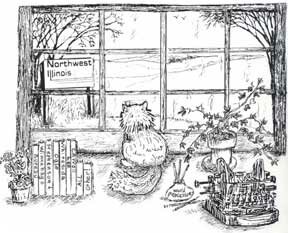Discover rewarding casino experiences. 
|
In fall they are mottled brown over the green and dull appearing. You’d never guess this is the green-gold that has intrigued generations of searchers, five thousand years for the Chinese. Its name in other languages means “cure-all” or panacea. It was thought to remedy everything imaginable! If you can identify it and hope to dig up its root, think again. You need to have a license from the state as does the buyer who will make certain it is Ginseng. Each of those red berries contain two or three seeds which are nearly as valuable as the root. They once sold for a dollar a piece in the heyday of the plant (see last week, part 1). That seed is carefully put into the earth where it lies dormant for a year, then will begin slowly to grow and eventually sprout but it takes seven to eight years before it’s mature enough to be dug and processed for the many medicinal purposes it is used for. If cultivated in a man-made environment it will take but four years or thereabouts. It is a slow process and the grower or hunter must be patient. By digging up the root, you see that the plant is forever gone and must be replaced. If cultivated and the long growing of it is begun over again. The plant grows to about fifteen to eighteen inches tall its five leaves are what inspired the identity—quin ... The attached sketch from “Life and Lore of Illinois Wildflowers,” gives you an idea of the design of the Ginseng.
The berries develop from a “ball” of tiny flowers, greenish-yellow, that bloom in May times. Each individual flower is only an eighth of an inch across, if that, five or fifty of them in a cluster. They have a delicate aroma similar to the lily-of-the-valley aroma. The female and male plants are separate plants, the male carrying the scent which lures bees from adjoining fields where they are browsing among other wildflowers and would not go into the woods if it weren’t for the lily-of-the-valley aroma. They resist the pull of the field flowers and enter the woods where the Ginseng awaits, take up the pollen and then linger at the female plant which is then pollinated. Its just one of Mother Nature’s practical arrangements. Last weeks’ Advocate, Part 1, Ginseng, included an excerpt from 1913 Carroll County History that told of the “new industry,” raising Ginseng. There was noted three large farms of over an acre each and said that there were several smaller patches. Several years ago PDQ Me visited one of these Ginseng “farms” and was privileged to scan a journal the Ginseng farmer had put together of statistics, facts, etc. plus photos of the shaded crop and its owner. It was an interesting and priceless treasure, now a hundred or more years ago. Experimenting with a new idea, a new challenge for a new industry is what Americans are all about. Thanks. Those Ginseng farms up around Wausau, Wisconsin have, some of them, been in the business for two or three generations. The esoteric plant has fascinated people for thousands of years and continues to. There are over one thousand license holders in Wisconsin. Beginning, perhaps, in the 1980’s, thieves started raiding the Ginseng farms there, digging up plants to carry away the root, stealing the valuable seeds, damaging or destroying equipment and ruining the years of patient work invested in the crop. Modern alarm systems and better security helped decrease that crime spree, that and the owners sleeping out in the shaded plant beds. It was thought that a few of the seasonal laborers on the farms were responsible, they having gathered information about the procedures and routine of the farms. We here in corn country hardly know the problems or benefits of other crop farmers. Somewhat resembling the Ginseng is the Wild Sarsaparilla which is sometimes mistaken for it with the bare, slender stem and umbrella of leaves covering the berries which is on the Wild Sarsaparilla are dark blue and contain five seeds where the stem holds the three branched leaves. That plant is also called Rabbit’s Root, Small Spikenard, Wild Licorice and Shot Bush because the berries resemble bird shot. This root has a pleasant scent, too. It was the main ingredient flavoring root beer but is not the wild thing for which the once popular drink, Sarsaparilla, or as it was more familiarly called —Sassparillie by the heroic cowboy who ordered up at the old time movie saloon. Pioneers used the Sarsaparilla for chills, fever, gout, throat and chest affectatopms while the Native American applied it in many ways, preparing it to cure syphilis, as a poultice for infected sores, a diuretic mild stimulant. The Indians are said to have existed on it on forced marches. How much the Ginseng and Sarsaparilla resemble one another, this wildflower know — little cannot say, but licensed buyers must because it is their duty to pick out the illegal root from the batch. Whether the seller innocently or purposely tries to pass off the wrong root has to be ascertained at that point. Another in the Panax category (cure-all) is the Dwarf Ginseng quite unlike its big brother. But it, too, is unspectacular ... A cluster of white-pink flowers growing above the leaves branching out from the stem. It blooms in April to May, the blooms developing into yellow berries. The plant springs up from a small round ball of root that will grow four to eight inches high. The root, because of its size and shape is sometimes called “ground nut.” It is about a half inch across. Perhaps because of the small size prevented it from becoming part of the Native American pharmacopeia although there is some mention of the using it for headaches, gout, colic and hives. Dwarf Ginseng never achieved the fame or notoriety of big brother, the man-plant, used since ancient times. The following observation, however, was written in the nineteenth century by medical writer, Charles Millspaugh. He might be said to have been the forerunner of the depressing, negative television commercials of the modern day when they promote drugs! ...”Ginseng causes vertigo, dryness of the mucous membranes of the mouth and throat, increased appetite, accumulation of flatus, with tension of the abdomen, diarrhea, decrease of urine, sexual excitement, oppression of the chest and increased heart action, irregular pulse, weakness and weariness of the limbs, increased general strength, followed by weakness and prostration, somnolence and much chilliness.” So watch those dosages! And take care of the Wild Ginseng, there may be some left from the days of “new industry” and before.
|






